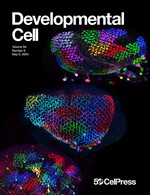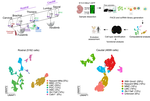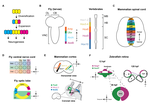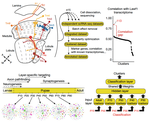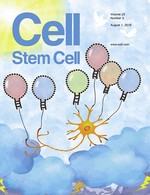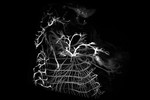Spatial patterning controls neuron numbers in the Drosophila visual system
Neurons must be made in the correct proportions to communicate with the appropriate synaptic partners and form functional circuits. In …
Using single-cell RNA sequencing to generate cell-type-specific split-GAL4 reagents throughout development
Cell-type-specific tools facilitate the identification and functional characterization of the distinct cell types that form the …
Aging Fly Cell Atlas identifies exhaustive aging features at cellular resolution
Aging is characterized by a decline in tissue function, but the underlying changes at cellular resolution across the organism remain …
MiR34 contributes to spinal muscular atrophy and AAV9-mediated delivery of MiR34a ameliorates the motor deficits in SMA mice
Spinal muscular atrophy (SMA) is a neurodegenerative disease characterized by the selective loss of spinal motor neurons (MNs) and …
Single-cell transcriptomic analysis reveals diversity within mammalian spinal motor neurons
Spinal motor neurons (MNs) integrate sensory stimuli and brain commands to generate movements. In vertebrates, the molecular identities …
Diverse cell-specific patterns of alternative polyadenylation in Drosophila
Most genes in higher eukaryotes express isoforms with distinct 3’ untranslated regions (3’ UTRs), generated by alternative …
A Complete Temporal Transcription Factor Series in the Fly Visual System
The brain consists of thousands of neuronal types that are generated by stem cells producing different neuronal types as they age. In …
Integration of Spatial and Temporal Patterning in the Invertebrate and Vertebrate Nervous System
The nervous system is one of the most sophisticated animal tissues, consisting of thousands of interconnected cell types. How the …
Neuronal diversity and convergence in a visual system developmental atlas
How neurons are generated and diversified has long puzzled developmental neurobiologists. One of the outstanding process is that it is …
Gene Regulatory Networks During the Development of the Drosophila Visual System
The Drosophila visual system integrates input from 800 ommatidia and extracts different features in stereotypically connected optic …
Mir-17∼92 Confers Motor Neuron Subtype Differential Resistance to ALS-Associated Degeneration
Amyotrophic lateral sclerosis is a neurodegenerative disease that causes progressive paralysis that is lethal and incurable to date. In this article, we discovered a developmentally critical microRNA cluster, mir-17~92, plays a role in the vulnerability of spinal motor neurons and supplementing this microRNA cluster can prolong the life expectancy in a mouse disease model.
Dlk1-Dio3 locus-derived lncRNAs perpetuate postmitotic motor neuron cell fate and subtype identity
In this article, we demonstrated that a long non-coding RNA, Meg3, is required to establish the boundary between two genes that mark spinal motor neurons from different body segments. To suppress the expression of caudal genes from expressing in rostral segments, Meg3 forms a complex with PRC2 to suppress them, the catalytic complex that marks histone with repressive modificication H3K27me3.
